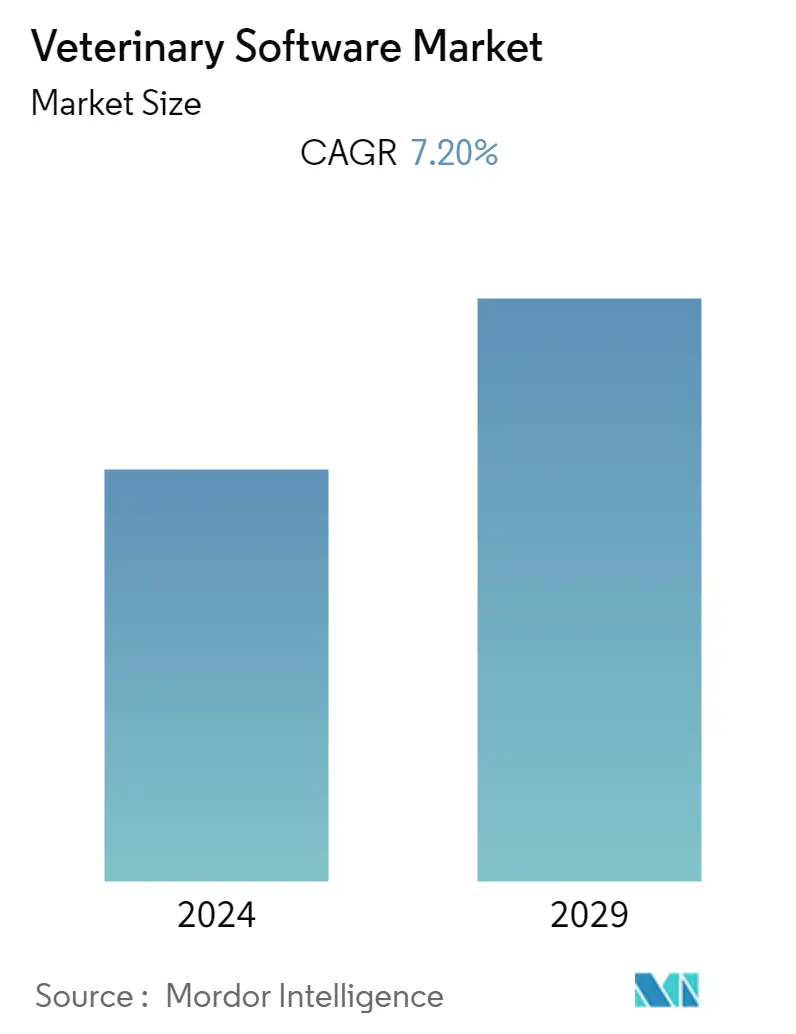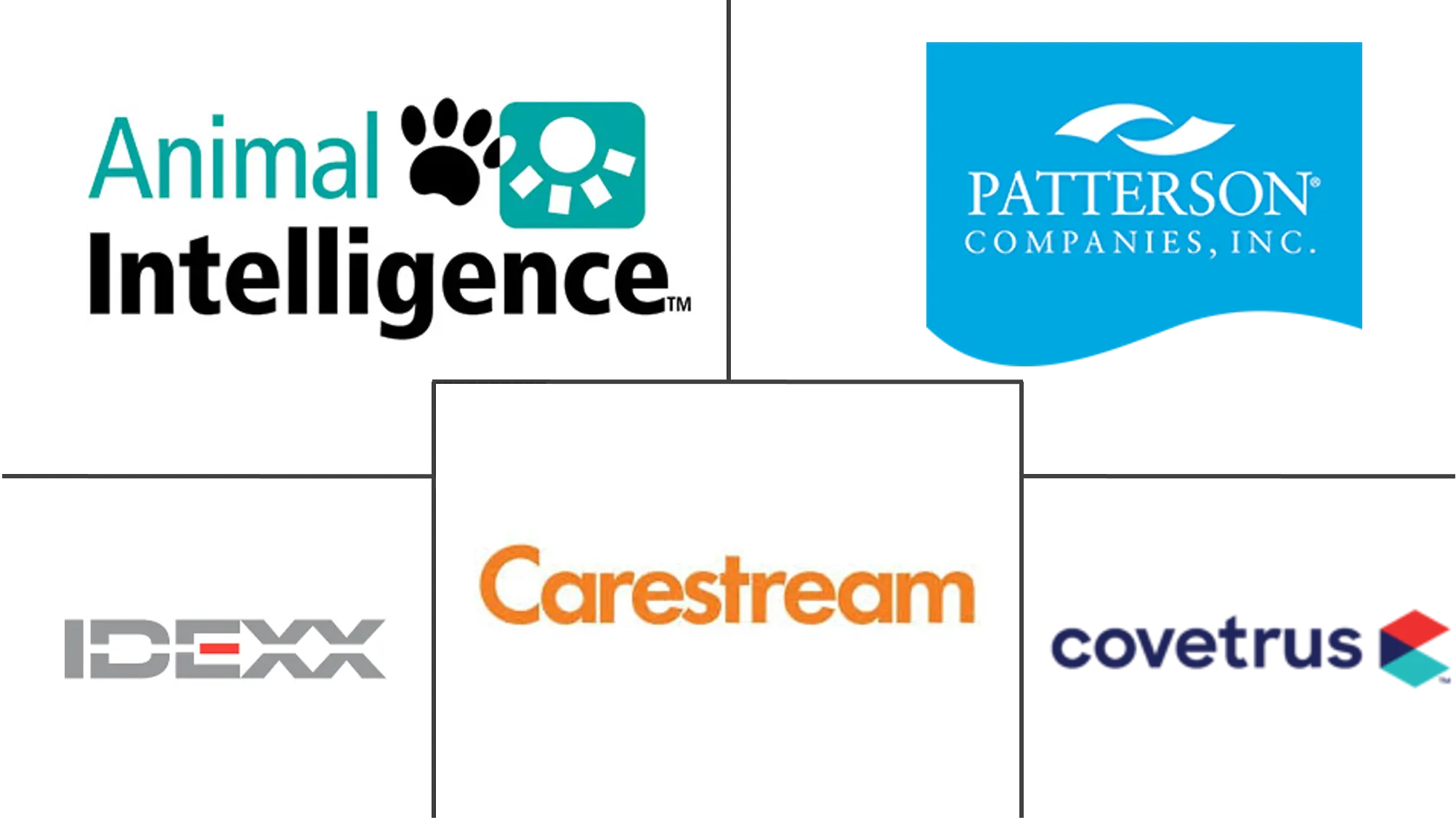Market Size of Veterinary Software Industry

| Study Period | 2021 - 2029 |
| Base Year For Estimation | 2023 |
| CAGR | 7.20 % |
| Fastest Growing Market | Asia-Pacific |
| Largest Market | North America |
| Market Concentration | Medium |
Major Players
*Disclaimer: Major Players sorted in no particular order |
Need a report that reflects how COVID-19 has impacted this market and its growth?
Veterinary Software Market Analysis
The market for veterinary software is expected to grow by 7.2% per year over the next few years.
The global outbreak of COVID-19 has impacted the veterinary software market. The COVID-19 pandemic caused drastic changes to people's normal routines, with social distancing and lockdowns in place across the world. Thus, many people were suffering from the veterinary software market. The COVID-19 pandemic caused drastic changes to people's normal routines, with social distancing and lockdowns in place across the world. Thus, many people were suffering from loneliness, which had a negative impact on their mental health. Therefore, many people adopted companion animals during the lockdown period. For instance, according to the PDSA PAW report published in June 2021, 2.0 million people in the United Kingdom owned pets between March 2020 and May 2021. Therefore, owing to the high rate of adoption, the demand for veterinary software was quite high during the pandemic and is expected to maintain an upward trend over the forecast period.
The major factors propelling the growth of the market include product innovations, software integration, and increasing opportunities for practice management. For instance, as per the Veterinary Hospital Managers Association (VHMA) report published in 2021, in response to the increasing demand for pet care, the requirement for more advanced equipment, processes, and, most importantly, systems and software has also increased. The same source also stated that veterinarians have accepted and acknowledged the professional management of veterinary practices using more advanced and integrated software. Therefore, the interest of veterinarians in software management in veterinary healthcare is encouraging key players to introduce innovative product lines in the market. For instance, in October 2020, Airvet, one of the leading veterinary telemedicine and telehealth platforms, announced the closing of a USD 14.0 million Series A funding round led by Canvas Ventures and several major veterinary industry leaders. This will enable the company to meet the rapid increase in demand for its telemedicine platform for both veterinarians and pet parents. Similarly, in July 2020, Zoetis acquired the veterinary engagement software company Virtual Recall. With this, Zoetis will expand its comprehensive offering across the continuum of care for veterinary clinics and will enhance the level of pet owner services that can be offered to its pet owner customers in the United Kingdom, Australia, and New Zealand. Therefore, owing to such positive developments, it is anticipated that the market will witness considerable growth over the forecast period.
Furthermore, the increasing number of veterinarians and increased adoption of veterinary software by veterinarians are also positively impacting the market. For instance, as per the data published by the American Veterinary Medical Association in 2021, over 68,000 veterinarians in North America and around 22,000 in the United Kingdom were practicing privately. This number is further anticipated to increase over the forecast period. This increase is anticipated to fuel the demand for these solutions for managing operations in clinics and reference laboratories. Moreover, veterinary practice software has been experiencing rapid technological advancements in terms of integrating with diagnostic and laboratory equipment and streamlining data, lab results, and images directly into a patient's medical record, which can be remotely shared with other veterinary practitioners for various purposes, such as consultations, dual treatments, and training. Thus, the increasing need for providing optimum care to animals through proper practice management is expected to drive market growth over the forecast period.
But the lack of government incentives to use software may slow the growth of the market over the next few years.
